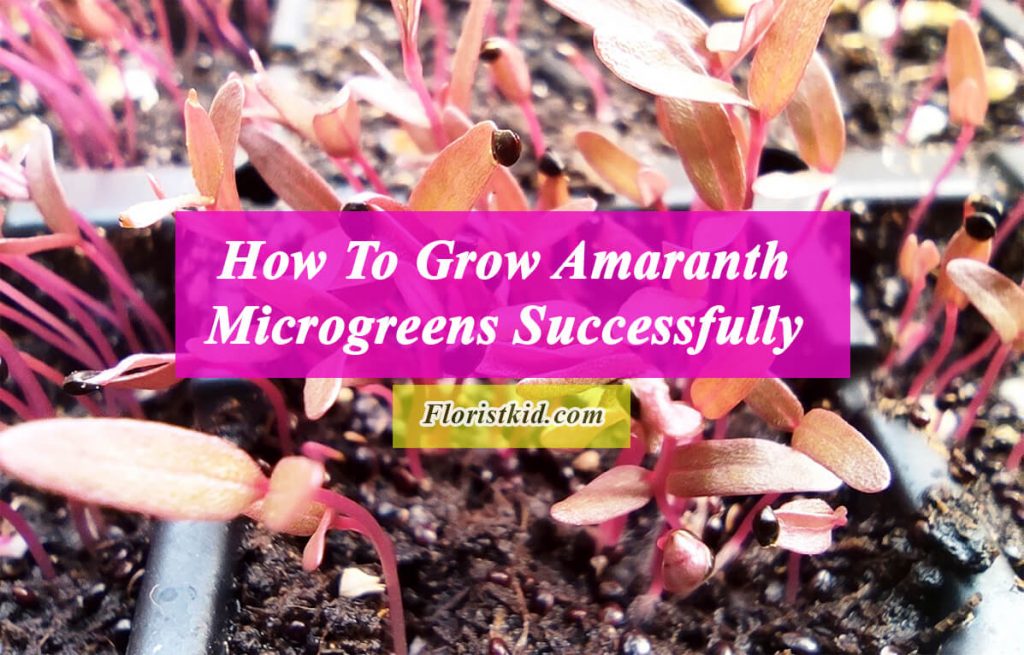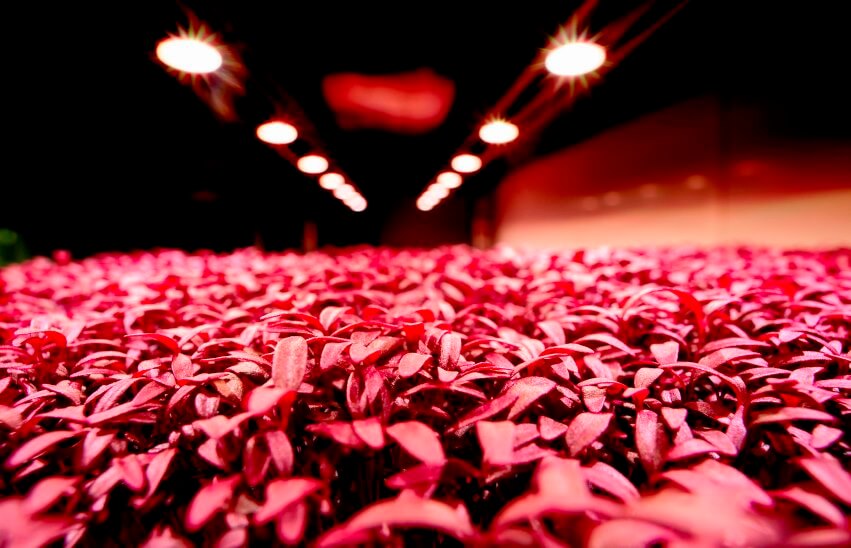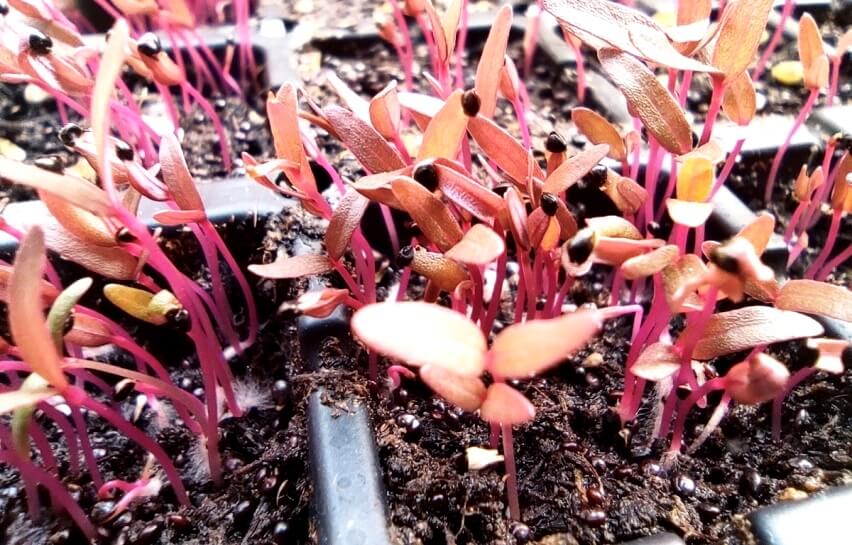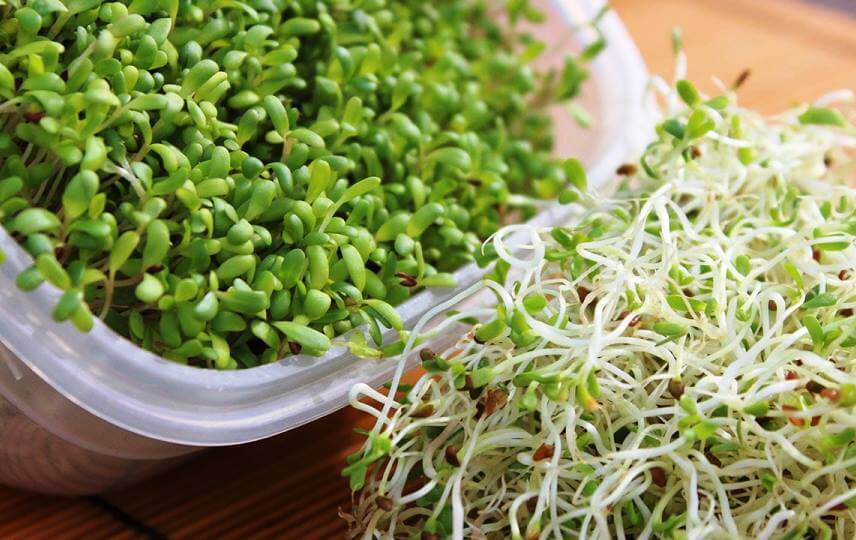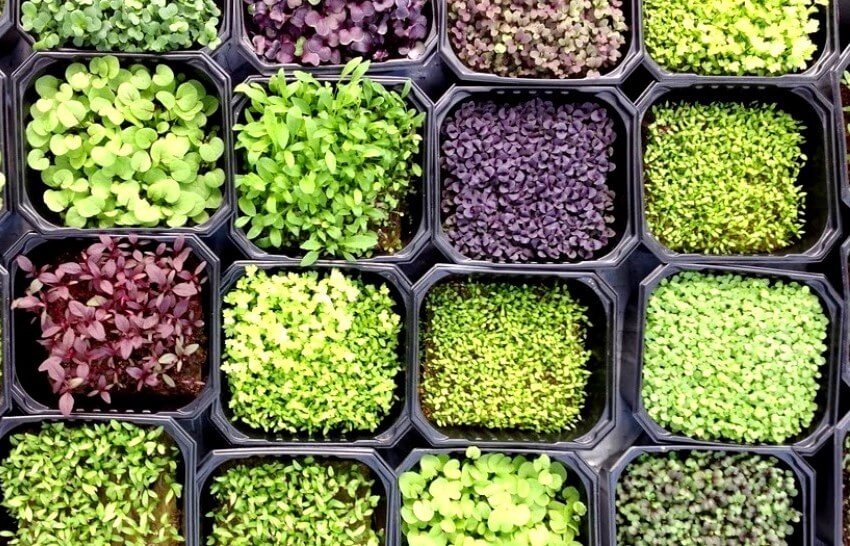Amaranth is a beautiful annual that thrives in the heat of summer when the soil temperature is at least 68 degrees Fahrenheit. Amaranth microgreens are among popular microgreens for chefs as they have beautiful dark-burgundy stems and Fuschia-tinged leaves. The tiny young leaves have a subtle, earthy flavour.
Amaranth microgreen is the secret to most popular mixes, ranging from brilliant magenta at the cotyledon stage to a deeper purple when growing true leaves. It is magnificent and creates a rich, vivid contrast at every point.
If Like to know more about microgreens, check these articles:
<<What Are Microgreens >> and <<Juicing Microgreens>>
Amaranth microgreen varieties
Red garnet is the best kind for growing as a microgreen. However, since this variety is so popular, finding providers of certified organic and untreated seeds has become more difficult.
Nowadays, some people plant Red garnet in their fields only for the purpose of harvesting seeds to utilize in their greenhouses. Other types include red and white stripes with a predominant green colour.
Amaranth History
Amaranth, a native of the Americas, was a staple of several of Central and South America’s great civilizations. Amaranth was regarded as a “super grain” and was planted alongside maize and beans in the fields. Amaranth production has decreased dramatically since its early cultivation.
Although the cause of this nutritious grain’s decline is primarily unknown, possibilities include inconvenient small seed size or agricultural modernization. According to Aztec legend, the Spanish conquistadors attempted to eliminate Amaranth because of its importance in traditional Aztec sacrifices. It is claimed that its attractiveness has helped it to survive thus far.
The entire plant has a noticeable brilliant magenta hue that is uncommon in today’s harvests. While Amaranth is still relatively obscure in the United States, it has been gaining popularity since the 1980s due to its high protein content and overall health advantages.
Amaranth microgreens overview
| Family | Amaranthaceae |
| Recommended Varieties | Red Garnet |
| Nutrition | Vitamins A, K, C, E, and K, Calcium, Iron, Magnesium, Folate, Manganese, Potassium, Zinc |
| Average days to germinate | 2 to 3 days |
| Average days to harvest (after germination) | 8 to 12 days |
| Difficulty | Medium to difficult |
Amaranth microgreens nutrition facts
One serving of amaranth microgreen delivers 950 percent of the Daily Value for vitamin K based on a 2,000-calorie diet! Vitamin K aids in blood clotting, which reduces the time it takes for a wound to heal. Vitamin K is also beneficial to bone health.
Amaranth microgreens are high in vitamin C as well. Vitamin C aids in the protection and maintenance of the body’s cells and the promotion of healthy skin, blood vessels, cartilage, and bones, and the healing of wounds.
Manganese is also abundant in Amaranth. It aids in the creation and activation of enzymes in the body. These enzymes are involved in various processes, including the breakdown and digestion of food.
Amaranth microgreen contains foliate, or folic acid, a vitamin that most people do not receive enough daily. Folate is essential for forming new cells and is especially critical for pregnant women.
Amaranth has a lot of protein. Consuming this microgreen is a great way to include protein into a vegetarian or vegan diet.
Healthy Amaranth microgreen
The nutritional value of 25 types of microgreens was investigated in a 2012 study undertaken by the University of Maryland and the United States Department of Agriculture (USDA). Garnet amaranth was one of the top four microgreens with the highest levels of vitamins C, E, A, and K among the 25 distinct microgreen types tested.
This means that Amaranth, particularly garnet amaranth microgreens, is one of the healthiest microgreens available. Red cabbage microgreen, cilantro microgreen, and green daikon radish microgreen are among the others that scored well.
health benefits of Amaranth microgreens
Amaranth microgreens have a variety of health benefits, including:
Healthy bones and joints
Amaranth microgreens are high in calcium, which helps maintain strong teeth and bones. They have also been shown to help lessen the risk of osteoporosis, a common cause of problems as people gets older.
Boosting Immune System
Amaranth microgreens contain minerals, nutrients, and vitamins that can help strengthen your immune system. This will aid in the fight against sicknesses, such as hypertension and cardiovascular problems.
Gluten-free
Since this microgreen is gluten-free, it is suitable for almost everyone. But, more importantly, it can truly aid in improving your digestive system.
Weight Control
Another advantage of amaranth microgreens is that they are high in fiber. This will make you feel fuller for longer, thereby suppressing your appetite. It will, in effect, assist you in maintaining or even losing weight.
How to grow Amaranth microgreens
Amaranth microgreen seeds can grow in three to four days when the soil temperature is 60 degrees Fahrenheit or higher. You can harvest them 8 to 10 days after germination. Since Amaranth thrives in dry, warm environments, try to keep the soil drier than most microgreens, especially after germination.
The procedure of growing Amaranth microgreens is almost similar to other microgreens. Read the <<Growing Microgreens >> article to learn more about the general method for growing microgreens.
Amaranth microgreens Growing Tips
Growing tips
- Consistency is required for growing amaranth microgreens. Temperature fluctuations cause low germination, as well as poor post-germination growth.
- Amaranth, which is traditionally farmed as a grain in arid areas, dislikes consistent soil soaking.
- You can harvest it when it is still in the cotyledon stage or wait until it is fully grown and has true leaves.
- Since Amaranth is a summer crop that thrives in the heat, it should not be grown in the winter.
- This tiny seed responds well to the towel approach.
- Maintain a pH of 7 in your water.
Amaranth microgreen seeds
Washing Tips
- Amaranth can be difficult to wash when it is picked early. The leaves may float through your fingers because they are so light and small. To process this crop, it is recommended to a tiny hand-held strainer.
- Separating the small beige seed hulls from the magenta greens might be tedious if you wait for them to mature. Remove any seed hulls from the sides of your washing receptacle with your hand.
Possible Challenges
- Overwatering and fluctuating temperatures can cause rot and poor germination and growth.
- This crop should be handled with caution.
- Amaranth despises alkaline soil, and a pH of more than seven will cause it to rot.
References:
- Gilbertie, S. (2015). Cooking with Microgreens the Grow-Your-Own Superfood. Countryman Press.
- Franks, E., & Richardson, J. (2009). Microgreens.
- https://rusticwise.com/amaranth-microgreens-nutrition-facts/#how-do-you-cook-amaranth-grains

